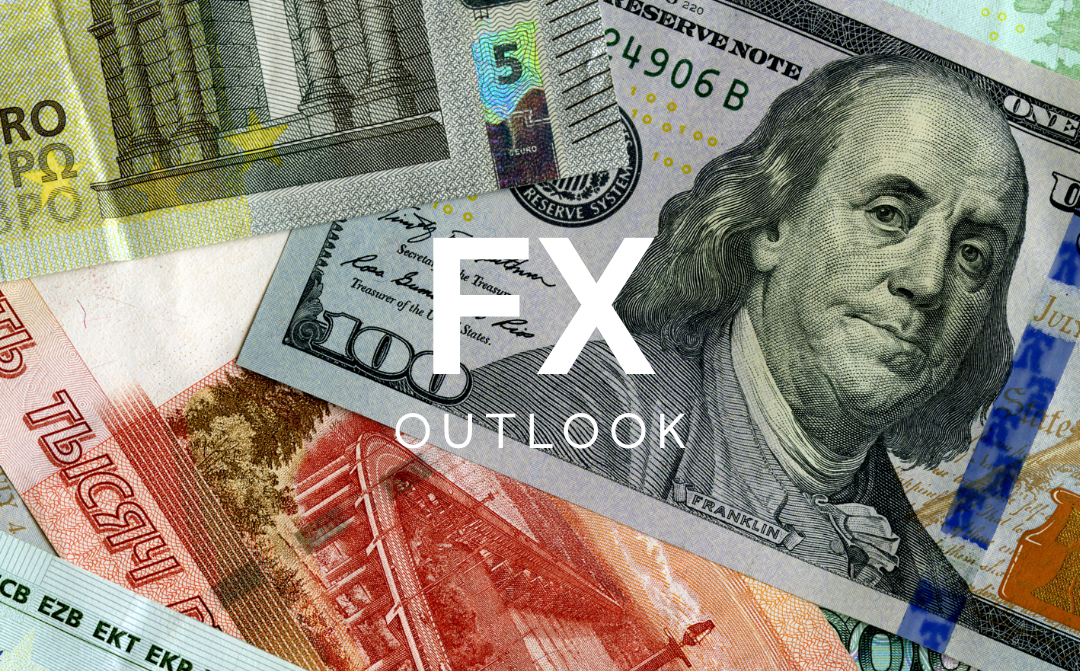6 Nov FX outlook – USD, EUR, GBP, CAD, AUD, NZD

Table of Content
USD
The US dollar had a busy week but ended up being the biggest net loser off the back of a FOMC rate decision and Friday’s job report. Particular weakness has been seen against the likes of the NZD and AUD, with risk sentiment benefitting these key commodity currencies. Meanwhile, the likes of GBPUSD, EURUSD, and USDCAD all saw the dollar lose ground as recent dollar gains were unwound.
The main events of the week came from the FOMC, and jobs report, although there were plenty of other events of note for the dollar. The FOMC decision to keep rates steady was largely expected, but the shift in pricing for a December hike signalled a belief that we may not necessarily see that additional tightening they laid out on the dot plot. With the ADP and headline payrolls coming in well below expectations, Fedwatch now see the chances of a December hike as just 10%. That figure was roughly 30% coming into the week.
With a very light economic calendar for the new week, the main highlight will be the speech from Fed Chair Jerome Powell which could shed more insights into the central bank’s future monetary policy plan. Also watch out for wider market sentiment, with any return of the bears in equity markets likely to drive a dollar resurgence.
EUR
The euro saw a somewhat mixed week, with the wider EUR index largely flat as gains against havens were offset by losses elsewhere. The EURUSD pair managed to push through the 1.07 level, representing the highest level since mid-September. While we saw the euro gain ground against the havens, losses for EURGBP, EURAUD, and EURNZD highlight that this currency was one of the weakest benefactors from the risk-on sentiment seen last week.
The euro hasn’t been performing well in terms of data as economic readings have been consistently disappointing. However, the reports on inflation across the eurozone suggest a slowdown, which has dampened the need for the European Central Bank to continue with further tightening. From a growth perspective, the eurozone looks at risk of further contraction, as highlighted by the latest German GDP figure of -0.1%. The sub-50 PMI surveys seen across the region do highlight an area that has struggled to grow over recent months.
This week has continued that same theme, with services PMI data bringing expectations of a contraction in France, Germany, and Italy. Looking ahead, appearances from ECB President Lagarde should help continue to guide markets as they look towards a future where the topic will likely shift towards rate cuts rather than hikes.
GBP
Sterling enjoyed a week to remember, with the currency gaining ground against many of its counterparts. With risk attitudes shifting away from haven assets, the gains in equity markets translated into a positive resurgence for the pound against the likes of the USD, CHF, and JPY. Meanwhile, weakness seen in energy markets, and a weak Canadian jobs report helped drive GBPCAD into the highest level since mid-September.
From an economic perspective, the big event of the week just gone came from the Bank of England, with the MPC opting to leave rates unchanged as expected. This meeting saw the majority widen as the 5-4 decision shifted to six members voting to keep rates steady at 5.25%. This lessened chance of a rate hike helped drive EURGBP weakness. However, the fact that this is a move seen across many of the central banks does mean that the bigger FX moves were driven by the widespread shift in risk attitudes.
This week has kicked off with a lower-than-expected construction PMI reading, although it is notable that the sector has seen the fastest decline in input prices since 2009. This does help the disinflation story, which could weaken the pound if it gathers momentum. Looking ahead, Friday provides the main event for the pound, with Q3 GDP expected to fall back into contraction territory. This would further enhance calls for the Bank of England to draw the line under their tightening phase. Also watch out for industrial production, manufacturing production, and the UK trade balance at the same time.
CAD
Despite having a good run against the US dollar, the volatility seen over the course of the week counted for little as the CAD index closed out the week largely unchanged. However, from a wider perspective, the currency did enjoy plenty of upside compared with the likes of the USD and JPY. On the flip-side, European currencies did enjoy some success against the Canadian dollar, with the antipodean’s (AUD & NZD) also enjoying plenty of upside against the Loonie.
According to the latest GDP data, the Canadian economy teeters on the brink of a contraction thanks to yet another 0% month-on-month growth figure. While the effects of the recession may not be felt yet, if economic activity continues to stall, the Bank of Canada may need to review its current monetary policy. The recent jobs report from Canada further confirmed the impact of the BoC’s interest rate hikes, with unemployment moving higher and the employment change figure moving sharply lower.
Heading into the new week, there is a distinct lack of any notable data that could move the CAD. However, that quiet calendar should not mean that the currency is devoid of movement. Instead, we will look towards the energy markets, following on from last week’s significant pullback. Concerns around events in the Middle East remain prevalent, with any signs of further escalation potentially bringing implications for crude and CAD pricing. We will also be keeping an eye on the Ivey PMI and trade balance data for more updates concerning the state of the Canadian economy.
AUD
The Australian dollar gained ground over the course of the week, with the wider AUD index taking a steady upwards trajectory that particularly gained traction on Wednesday and Friday. In terms of specifics, the biggest gains took place against the havens as risk attitudes shifted away from the likes of the USD, JPY, and CHF. However, we also saw AUD outperform against European currencies, highlighting the tone leading into this week’s RBA rate decision.
Last week saw Chinese data dominate, with PMI surveys released throughout the Asian powerhouse. Unfortunately, there was little room for optimism, as both the headline and Caixin manufacturing PMI surveys fell into contraction territory. Meanwhile, services also lost ground across both surveys, although they managed to remain marginally in expansion territory. The latest Australian trade balance shifted sharply lower, highlighting concerns over exports in the face of weakening demand. Nonetheless, concerns around the Chinese economy are yet to have a tangible effect on Australian retail sales, with the latest figure of 0.9% highlighting continued strength in consumption. This will be a concern for the RBA, with consumers apparently willing to maintain spending in the face of higher prices.
With Australian inflation and retail sales remaining elevated, the RBA are expected to bring another rate hike this week. At a time when other banks appear to have drawn a line under this period of tightening, another hike from the RBA could drive additional AUD strength. However, it is worthwhile noting that their current cash rate of 4.1% stands well below the likes of the RBNZ (5.5%), FOMC (5.5%) and BoE (5.25%). The outlook for further tightening will be key irrespective of the decision. Also keep an eye out for the Chinese CPI data on Wednesday night, with a potential move back into deflation serving to highlight concerns around economic strength in the region.
NZD
The New Zealand dollar similarly gained ground last week, with the weakness of AUDNZD serving to highlight this currency as the top performer over the period. Once again, particular gains were seen against the likes of the USD, CAD, and CHF thanks to a shift in wider risk attitudes. Whether this can be maintained will likely be more to do with market sentiment than the NZD specifically.
The quarterly New Zealand jobs report brought a particular focus last week, with a jump in unemployment (3.9%) grabbing the headlines. However, from an inflation perspective, the decline in the labor cost index should help improve confidence that price pressures are abating. From a political perspective, last week saw the final election results signal the need for a three-party coalition. There is a hope that a wider coalition could tone down the radical nature of this new leadership.
Looking ahead, coalition talks remain a key factor for NZD sentiment. From an economic perspective, keep an eye out for the latest inflation expectations figure which has been predicted to fall from 2.8% to 2.6%. Also watch out for the GDT dairy price metric as a gauge of export pricing for New Zealand agricultural businesses.
Disclaimer: This material is a marketing communication and shall not in any case be construed as an investment advice, investment recommendation or presentation of an investment strategy. The marketing communication is prepared without taking into consideration the individual investors personal circumstances, investment experience or current financial situation. Any information contained therein in regardsto past performance or future forecasts does not constitute a reliable indicator of future performance, as circumstances may change over time. Scope Markets shall not accept any responsibility for any losses of investors due to the use and the content of the abovementioned information. Please note that forex trading and trading in other leveraged products involves a significant level of risk and is not suitable for all investors.







